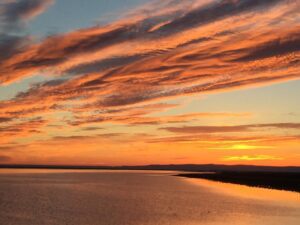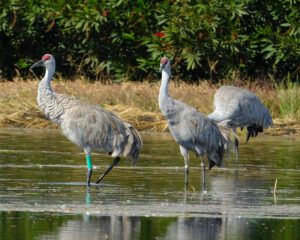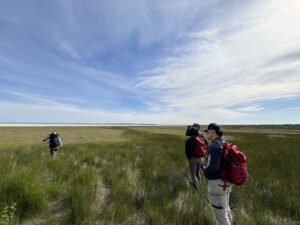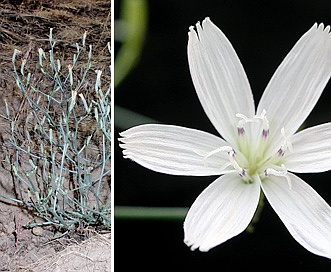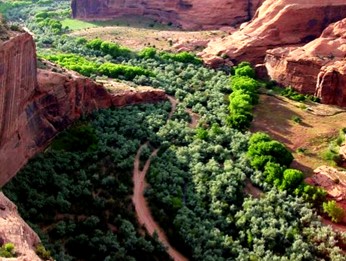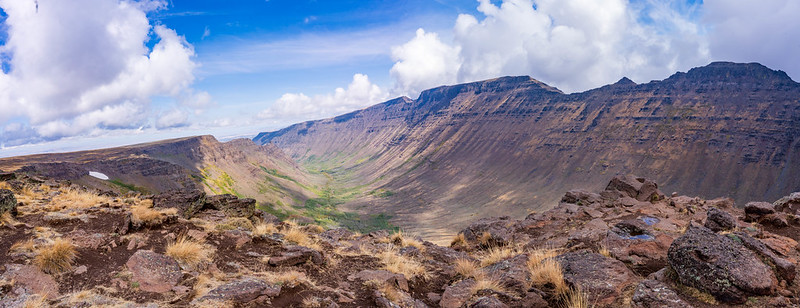Written by Peter Pearsall/Photos by MNWR and FOMR
In September of this year, wind storms damaged several of the iconic trees at Malheur Refuge, including an old cottonwood (Populus spp.) near the Crane’s Nest Nature Center that required professional arborist work to reduce risks of falling limbs.
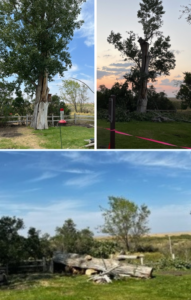
Arborist Jon Brown arrived on September 15 to assess the wind-damaged tree. The front side of the trunk was completely dead and disconnected from the living back portion and the ground. He determined that height reduction was the first step and used a pole saw to reduce and/or remove the live branches that were tall enough to strike the Nature Store in the event of the whole tree failing.
Jon and his crew returned in October for a three-day session to reduce risky limbs and large deadwood from this tree and others at HQ, as well as trees at Sod House Ranch and P Ranch. At Malheur Refuge, all tree work seeks to conserve habitat resources while prioritizing visitor safety. This effort is funded by FOMR and the Refuge.
Many of the large trees at Malheur Refuge are decades or even centuries old, planted by ranchers or homesteaders and incorporated into the Refuge with its establishment in 1908. Through the Refuge Tree Inventory & Risk Assessment Report, Refuge staff and partners are working together to reduce the risk of other large, failing trees damaging historic buildings or public access areas. With extra care, we can retain and support as much tree biomass as possible to support the needs of diverse wildlife.


